The No Nukes Festival was held on Martha’s Vineyard 45 years ago, and there are still plenty of people on the Island who not only attended the festival, but look back on it as one of the highpoints of their youth.
How do I know? Because when I ask someone, “Did you go to the No Nukes concert?”, they generally pause what they’re doing, look me in the eye — and break into a big grin.
You have to understand the Vineyard in the ’70s. Young people in their 20s and 30s were coming to the Island in droves, drawn to the laid-back lifestyle, a sense of freedom, and a shared social consciousness.
In 1973, President Richard Nixon initiated Project Independence, which sought to build 1,000 nuclear power plants by 2000. The Clamshell Alliance was created in 1976 to make sure that Nixon wouldn’t have his way.
In May 1977, over 2,000 Clamshell Alliance nonviolent protesters occupied the Seabrook Nuclear Power Plant construction site in Seabrook, N.H. Close to 1,500 of these activists were arrested and held in jails and National Guard armories for up to two weeks, after refusing to pay bail.
In 1973, President Richard Nixon initiated Project Independence, which sought to build 1,000 nuclear power plants by 2000. The Clamshell Alliance was created in 1976 to make sure that Nixon wouldn’t have his way.
A large contingent of Vineyarders were at the protest, including Jay Walsh, a UMass student who would go on to play a critical role in starting the Martha’s Vineyard No Nukes Concert.
The primary organizer of the No Nukes Concert is a familiar face on the Vineyard today, John Abrams, the CEO and co-owner of South Mountain Co. In 1974, Abrams was complicit in an act of civil disobedience against the production of atomic power that was immortalized in a documentary film called “Lovejoy’s Nuclear War.”
Sam Lovejoy, an antinuclear activist, was responsible for toppling a 500-foot weather tower that was constructed to study weather conditions in preparation for building a nuclear power plant in Montague.
“I helped Sam load his tools the night he went to knock the tower down,” Abrams said. “He loosened one of the turnbuckles that held the guy wires, and the tower went tumbling down.”
Lovejoy then turned himself in to the police, along with a four-page statement decrying the dangers of nuclear power and accusing the government and utilities of “conspiracy and despotism.” Lovejoy went on trial in 1974 and took full responsibility for his actions and after a dramatic seven-day trial, he was acquitted on a technicality. He would later go on to help found the Clamshell Alliance.
John Abrams moved to the Island in 1975 after a six-year back-to-the-land odyssey, with his friend Mitchell Posin, his wife Chris, and his five-year-old son Pinto. He came to build a house and make some money and then return to Vermont but, as it turned out, good builders were much in demand on the Island, and John and his family never left. They were living, along with Mitchell Posin, in Clarissa Allen’s house at the Allen Farm in Chilmark. Jay Walsh, who was summering on the Island at the time, remembers an evening when he traveled out to the Allen Farm for a game of poker.
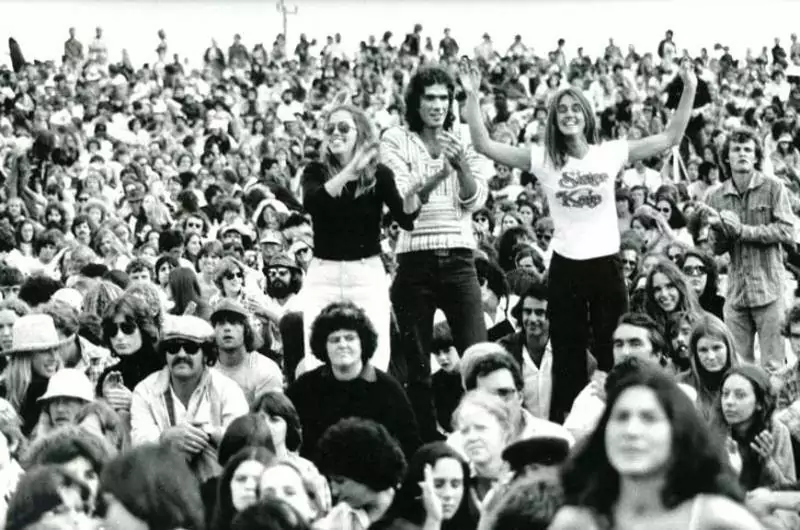
“We were talking about no nukes,” Walsh said, “and we thought, Wouldn’t it be great to have a concert and raise some money for the antinuclear movement?”
“The way we conceived it,” Abrams said, “was as a festival. We’d have music as the driver, but we’d bring in speakers, and offer lots of food from Island providers as well.”
The group of organizers would grow to include not only Abrams and Walsh but a host of others, including Steve Sinnett, Mitchell Posin, Steve Donavan, Carmel Gamble, Patrie Grace, Tom Campbell, Chris Abrams, and Clarissa Allen, who would donate her family’s farm in Chilmark to be the location of the festival.
“The site was fantastic,” Abrams said. “There was kind of a bowl there where the stage could be set up, and it all looked out over the sparkling ocean.”
What was interesting about this group was that no one had any experience in staging a festival. But then again, it was the Age of Aquarius and anything was possible.
Abrams thought that he’d spend about a half-dozen weekends putting the event together, but instead he spent about two months, working 60 to 70 hours a week. The first priority would be lining up the acts.
“We started by approaching a few musicians, mostly grouped around the Taylor family,” Abrams said. “Carly, Kate, Alex… James was in and out, and finally out.
“I reached out to Peter Simon to see if he could help getting Carly on board, and Peter came back to us and said Carly would love to do it, but that you guys have no idea of what you’re doing. The only way she would accept the invitation was if you brought in a professional promoter…, someone who actually knew what he was doing.
“We ended up talking to Tom Campbell, an LA producer who had produced other concerts and events for the nuclear movement,” Abrams said. “He came and worked with us for the last week or two, and he was a huge help.” And his presence was enough to get Carly Simon to sign on.
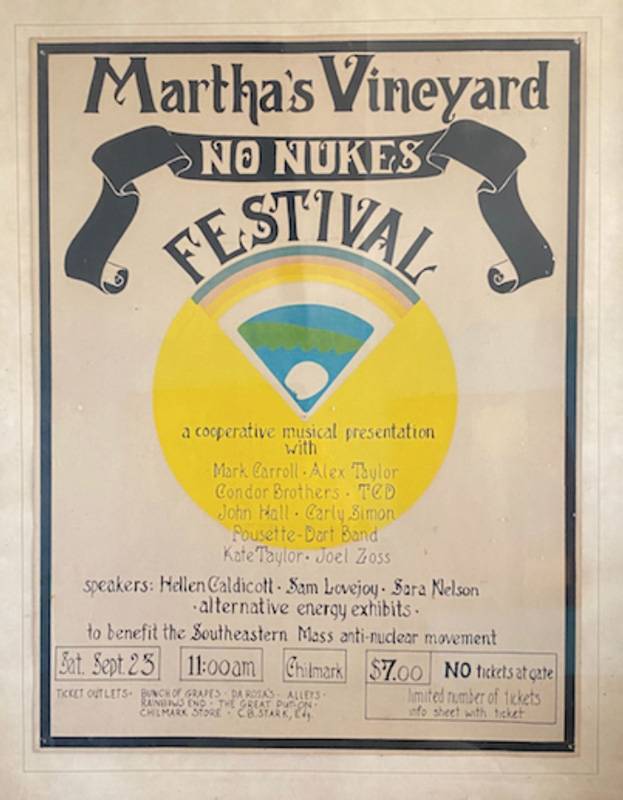
“When it came to picking a date,” Abrams said, “Peter was a weather maven, and he told me that there is a corollary from year to year — any day that has historically been sunny is likely to be so again. I went to TF Green airport, where they have weather records going way back, and found that in the last 100 years, it had never rained on September 25. We had our date.” And that’s how the group decided to hold the concert on September, 25, 1978. Campbell’s advice proved to be right on the money. But just barely.
Getting musical acts for the concert was made much easier by having Carly Simon at the top of the bill. The acts included John Hall, formerly of the band Orleans. “He sang his anti-nuke anthem ‘Power,’” Abrams said. The Pousette-Dart Band, a popular New England–based folk-rock band in the ’70s and ’80s, was added to the bill, as were Kate and Alex Taylor. Other local artists included Joel Zoss, who wrote “Been Too Long at the Fair,” sung by Bonnie Raitt, and Mark Carroll, a local singer-songwriter. Two other local bands were the Condor Brothers and TCD — short for Timothy Maxwell, Charlie Esposito, and Dwayne Giesemann, who had a big following on the Island.
The speakers for the day were from the antinuclear movement. Sara Nelson, the chair for the National Organization for Women, Sam Lovejoy from “Lovejoy’s Nuclear War” fame, and Helen Caldicott, an Australian physician who was one of the founders of Physicians for Social Responsibility, all spoke.
Abrams and crew had seemingly crossed all the t’s and dotted the i’s in preparation for the day. They had built a beautiful stage. The local police, notably George Manter in West Tisbury and Andy Parker in Chilmark, were on board with the effort, and were very cooperative. Jay Walsh was in charge of transportation. He arranged to have buses move people to the concert from staging areas at the West Tisbury Grange Hall and elsewhere. John George headed security. Tom Feeney, a local pilot, picked up some of the off-island musicians.

The organizers had done everything that was humanly possible to pull off the event. But then something happened that was beyond the reach of mere humans.
“It rained like hell the day and night before the concert,” Abrams said. “But then by 5 am the clouds cleared, it turned out to be a gorgeous day and the concert went off without a hitch.”
“Everything went as smoothly as it could,” Walsh said. “It was such a pleasurable union of friends and family, there were good spirits all around. It was a big neighborhood party. Everyone had a smile.”
Terre Young of West Tisbury is one of the people who attended the concert, and even on the phone I could tell she was smiling. “I came down from Boston with my brother,” Young said. “The weather was perfect, the clouds were magnificent, there was a magical vibe in the air. I just remember the music being great, and I felt like I was at one with the bodies of many…waving, singing, and cheering at the songs.”
Kate Taylor, who performed at the concert, wrote to me in an email: “The festival on the field in Chilmark was a precious moment in time where it felt like anything was possible. We cared about our planet and our fellow man. Our culture and our perspectives have evolved over time, sometimes for better and sometimes for worse, but on that hillside in Chilmark, we were sure, we were together, and we had hope. One of the beautiful things about Martha’s Vineyard is that we have all that still.”
The festival was not only an artistic success, but a financial success as well. “There were 7,000 tickets sold,” Abrams said, “and we raised somewhere between $15,000 and $20,000 to benefit the Southeastern Massachusetts antinuclear movement.” It’s interesting to note that in 1978, there were only about 7,000 people on the whole Island. Yes, many people came over on the ferry to attend the concert, but it’s safe to say virtually everyone on the Vineyard rallied around the event.
The concert was, in and of itself, a huge success. But it also went on to inspire another antinuclear event that was even larger.
“Late at night, after the festival,” Abrams said, “a lot of us were hanging out at Clarissa’s farmhouse, and we were thinking how great it would be to do something like this in New York. Actually, I think it was John Hall’s idea.”
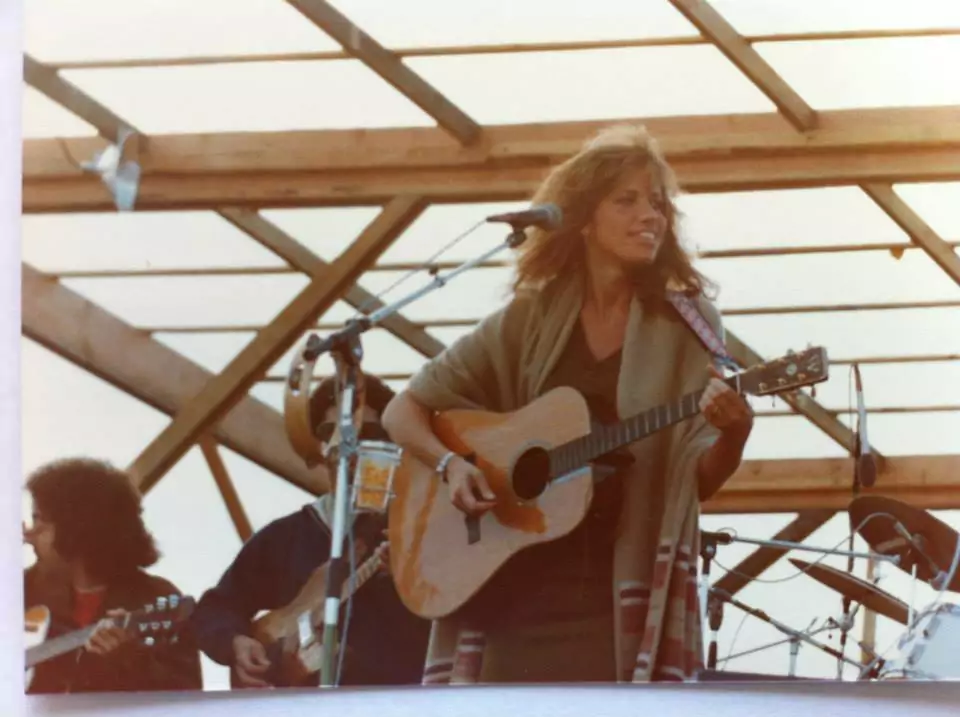
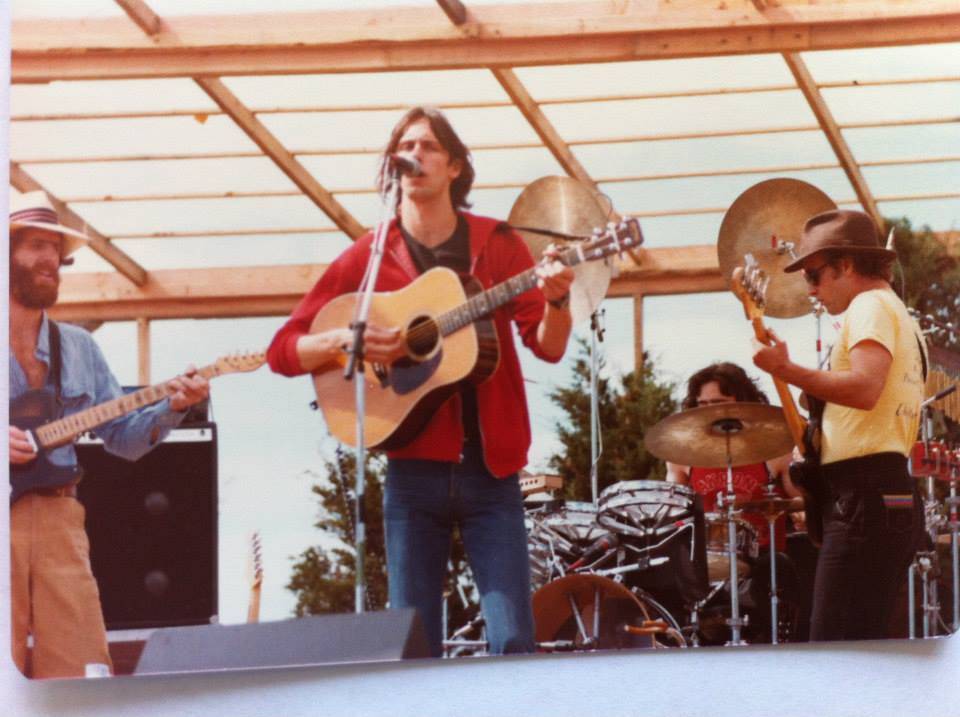
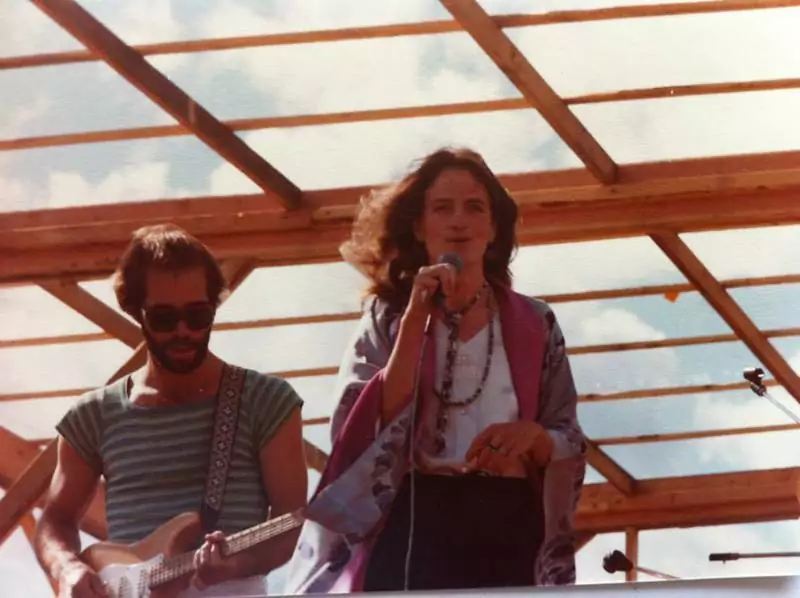
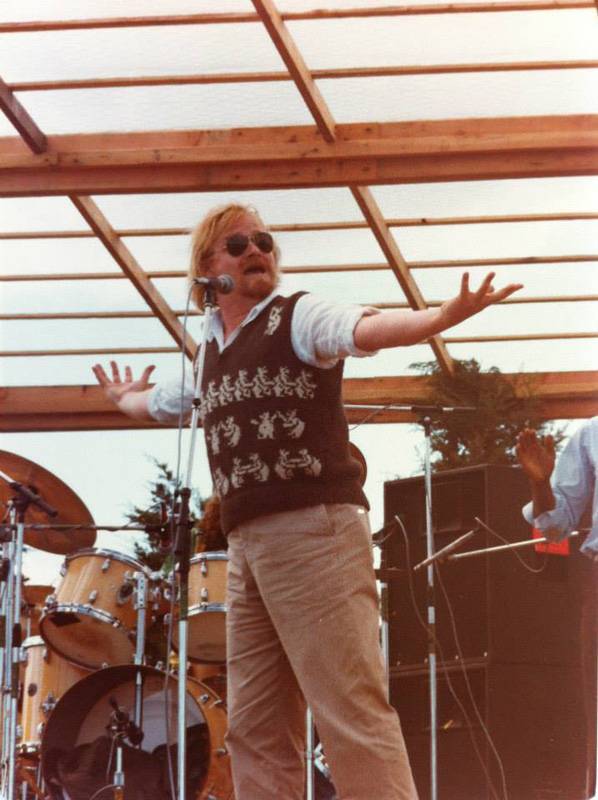
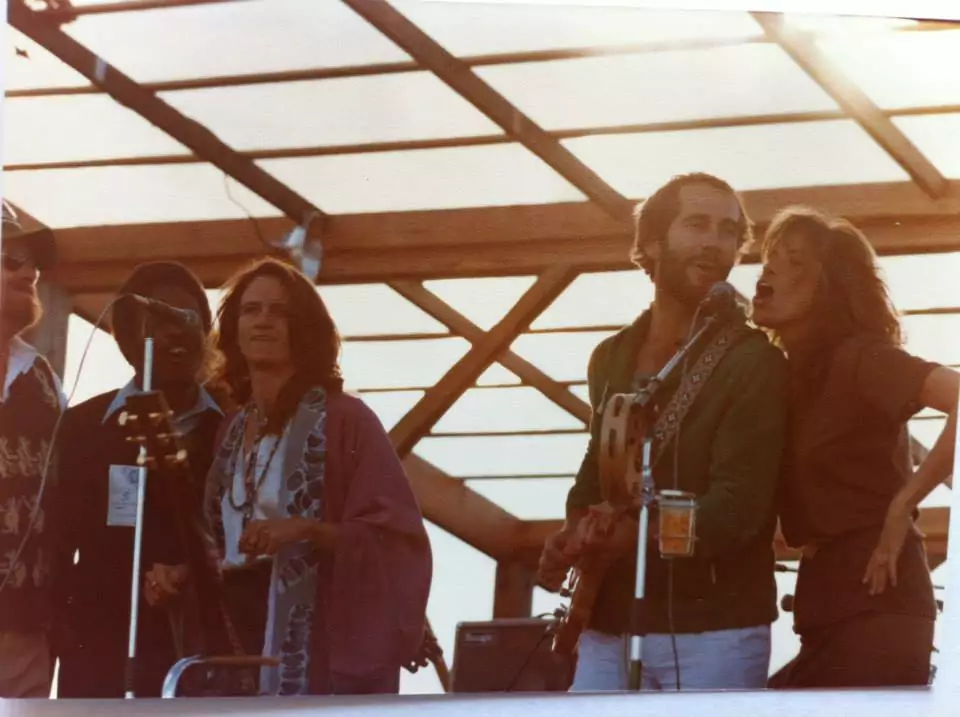

And that would lead to the MUSE concerts (Musicians United for Safe Energy) the following year. Three days of concerts were held in Madison Square Garden, featuring a who’s who of rock ’n’ roll, including Carly Simon, James Taylor, Bonnie Raitt, the Doobie Brothers, Crosby, Stills and Nash, Jackson Browne, Bruce Springsteen, Tom Petty and the Heartbreakers, Poco, and Neil Young.
A bunch of the crew from the No Nukes concert went down to New York to help out with the MUSE concerts, but what’s amazing is that after the success of the two concerts, to the best of Abrams’ knowledge, none of the No Nuke organizers ever got involved in producing a concert again. “This was a particularly intense short-term adventure,” Abrams said, “but it’s great to remember we actually pulled the whole thing off. What started off as just a fun thing ended up being a ton of work. There were some stretches where things got tough that I choose not to remember — mostly I remember the tremendous collaboration and the contributions of so many people to an extraordinary day.”

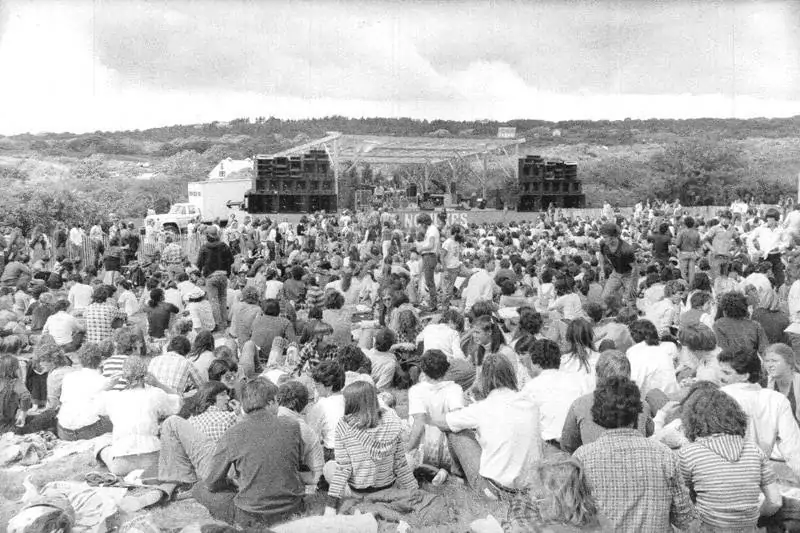
How is it that no one editing picked up on the incorrect spelling of Jackson Browne’s name?
Good catch Ellen! This has been fixed.